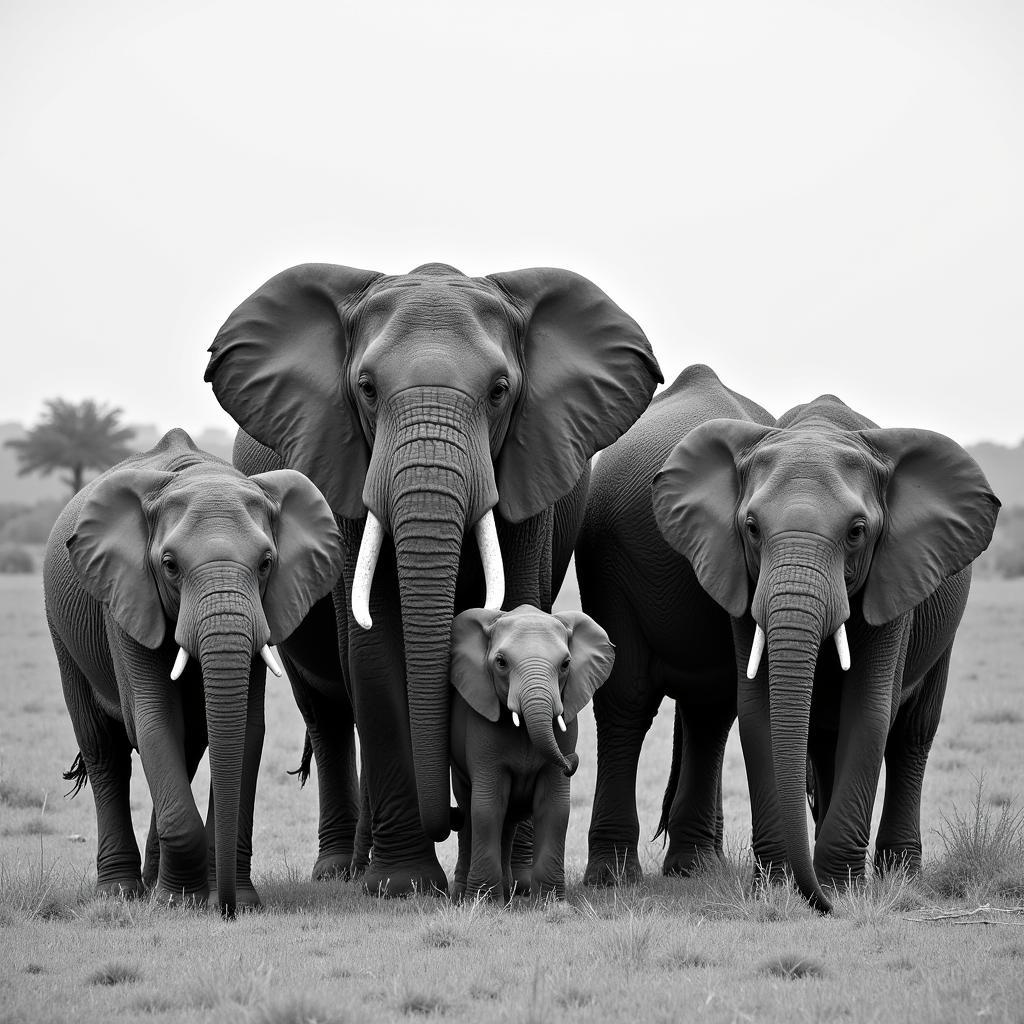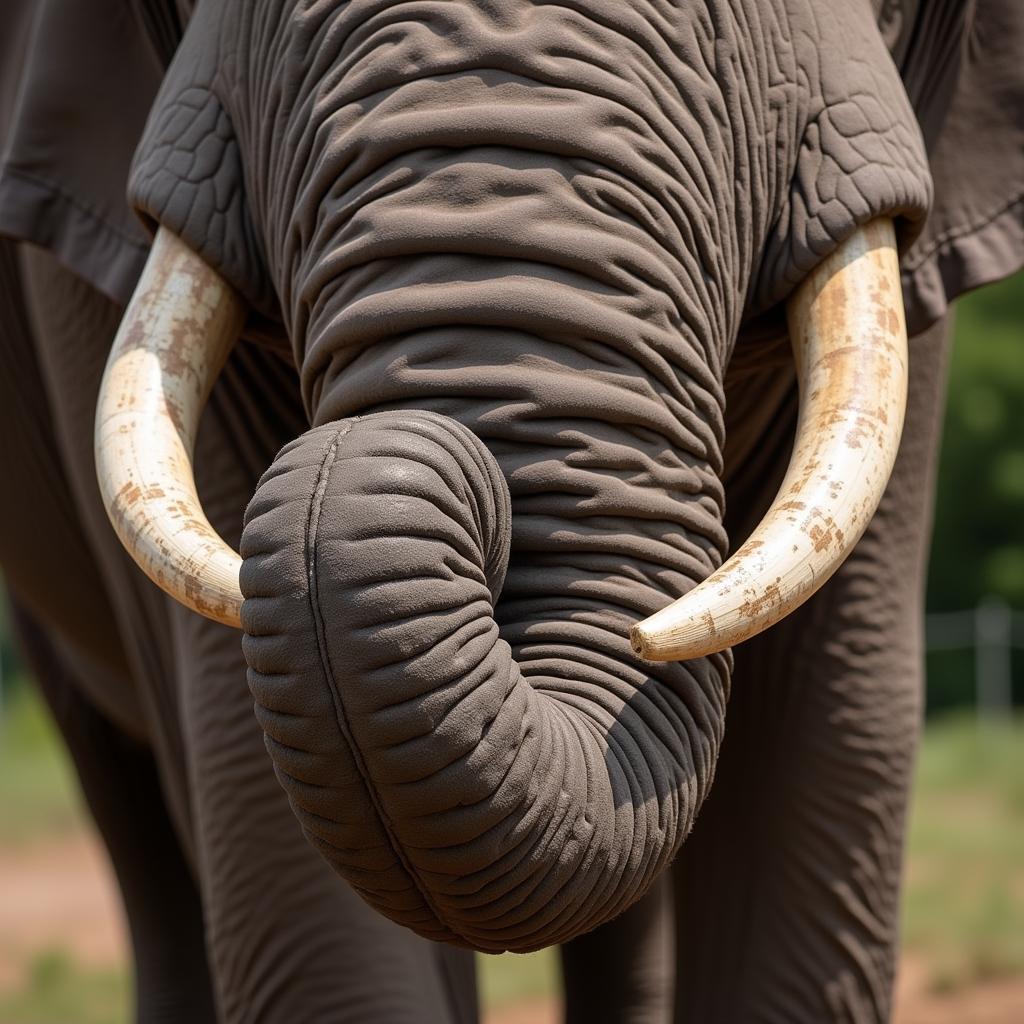African Adult Bush Elephant vs Indian Adult Elephant: A Detailed Comparison
The African adult bush elephant and the Indian adult elephant, while both majestic creatures, possess distinct characteristics. This article delves into a comprehensive comparison of these two fascinating giants, exploring their physical attributes, habitats, behaviors, and conservation status. Let’s embark on this journey of discovery, uncovering the nuances that differentiate the “African Adult Bush Elephant Vs Indian Adult Elephant”.
Size and Appearance: Spotting the Differences
The most noticeable difference between the two species lies in their size and physical features. African bush elephants are significantly larger, with males reaching up to 13 feet tall at the shoulder and weighing up to 6 tons. Their Indian counterparts are smaller, averaging around 9 feet tall and weighing up to 5 tons. African elephants boast larger ears shaped like the African continent, while Indian elephants have smaller, fan-shaped ears. Another key distinction lies in the tusks. Both male and female African bush elephants typically have tusks, whereas only some male Indian elephants develop tusks.
Another distinguishing feature is the shape of their heads. African elephants have a sloping forehead and a single “dome” on their head, while Indian elephants have a twin-domed head with a prominent indent in the center. The African elephant’s back dips slightly, whereas the Indian elephant’s back arches more prominently. These physical differences allow for easy identification between the two species.
Habitat and Distribution: Where They Roam
African bush elephants, as their name suggests, inhabit the savannas, grasslands, and forests of sub-Saharan Africa. They can also be found in deserts and high-altitude areas. Indian elephants, on the other hand, are native to the forests and grasslands of India, Sri Lanka, Bangladesh, and other parts of Southeast Asia. Their habitats are generally more fragmented and under greater pressure from human encroachment. Check out more about the African bush elephant’s features. african bush elephant features
Social Behavior: Family Ties
Both African and Indian elephants are highly social animals, living in complex matriarchal herds. However, the structure of these herds differs. African bush elephant herds are generally larger, comprising related females and their young. baby african elephant Adult males tend to leave the herd and live solitary lives or in small bachelor groups. Indian elephant herds are typically smaller and more closely knit. They often consist of a few related females and their offspring, led by the oldest female.
Diet and Feeding Habits: What’s on the Menu?
Both species are herbivores, consuming a diet of grasses, leaves, bark, and fruits. African bush elephants, due to their larger size and the nature of their environment, consume more grass and browse on trees and shrubs. Indian elephants have a more varied diet, including a greater proportion of fruits and other vegetation found in their forested habitats.
Conservation Status: A Growing Concern
Both African bush elephants and Indian elephants are facing significant conservation challenges. Poaching for ivory remains a major threat to both species, particularly African elephants. african elephant vs rhino Habitat loss due to human expansion and agricultural development is another critical factor contributing to their declining populations. Conservation efforts are crucial to ensure the long-term survival of these magnificent animals. Explore more on the African bush elephant. african bus elephant
Conclusion: Appreciating the Giants
The “african adult bush elephant vs indian adult elephant” comparison highlights the unique characteristics of each species. While sharing a common ancestry, their physical attributes, habitats, and behaviors have evolved in response to their distinct environments. Understanding these differences is vital for appreciating the biodiversity of our planet and for implementing effective conservation strategies to safeguard these magnificent creatures for future generations. Explore the geographical distribution of African animals in more detail. african animal map geographical
FAQ
- What is the main difference in ear shape between African and Indian elephants? African elephants have large, continent-shaped ears, while Indian elephants have smaller, fan-shaped ears.
- Which elephant species is larger? The African bush elephant is significantly larger than the Indian elephant.
- Do all elephants have tusks? No, only some male Indian elephants have tusks, while both male and female African bush elephants typically have tusks.
- Where do Indian elephants live? Indian elephants are found in the forests and grasslands of India, Sri Lanka, Bangladesh, and other parts of Southeast Asia.
- What is the biggest threat to both species? Poaching for ivory and habitat loss are the biggest threats to both African and Indian elephants.
- What is the social structure of elephant herds? Both species live in matriarchal herds, but African herds are generally larger than Indian herds.
- What do elephants eat? Elephants are herbivores, consuming grasses, leaves, bark, and fruits.
Further Questions and Resources:
Want to learn more about elephant conservation efforts? Check out our other articles on related topics.
When you need assistance, please contact us:
Phone: +255768904061
Email: [email protected]
Address: Mbarali DC Mawindi, Kangaga, Tanzania.
Our customer service team is available 24/7.


